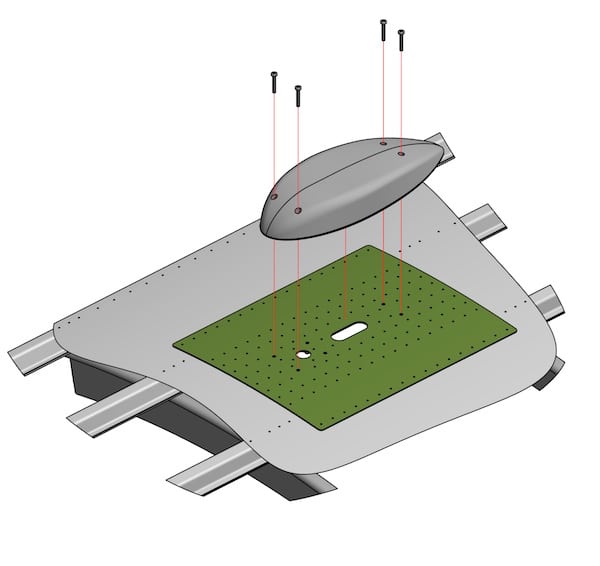
L2′ Aviation’s antenna upgrade STC for Airbus A330s.
A new FAA supplemental type certification (STC) issued to L2 Aviation enables the upgrading of Delta Airlines A330s with new satellite communications technology, replacing a high-frequency radio on each aircraft.
L2 was contracted by Rockwell Collins to provide engineering, design and project certification management to enable the use of satellite communications for air traffic services safety voice services.
“This latest STC represents the first Iridium ICS-220A/IRT-2120 approval for Air Traffic Service (ATS) Safety Voice service,” according to a statement by L2.
Rockwell Collins, on behalf of Delta, contracted L2 to perform the integration, kitting and certification “sans supplying the line replaceable units, Iridium service and installation touch labor,” according to L2 Aviation CEO Mark Lebovitz.
Manufacturing occurred at L2’s Austin, Texas facility.
“L2 ships the kits with 8130-3 tags directly to the operator on Rockwell Collins’ behalf,” said Lebovitz.
During the STC approval process, L2 installed and fully tested the systems to show end-to-end functionality. The STC provides Delta with the supporting data to apply for operational approvals (OpSpecs) with its certificate management office (CMO) to operate Iridium-based air traffic safety services for satvoice and controller to pilot data link communications (CPDLC), said Lebovitz.
Delta’s A330 upgrade centers around the installation of a Iridium transceiver, Configuration Identity Module (CIM), and dual element antenna. The engineering package to enable the upgrade includes configuration procedures, ground test procedure, harness routing and electrical load analysis.
The STC also allows for the installation of a single channel Iridium transceiver, which is completely interchangeable with the dual channel Iridium transceiver. The ICS is interfaced with the existing data communication system of the aircraft to send datalink messages over Iridium. The STC also deactivates and removes the replaced Inmarsat system via an antenna cover plate supplied in the installation kit, according to information provided by L2.
Many commercial airlines have expressed the desire to replace high-frequency radios with satellite communications completely at government-industry forums such as the Performance-based Operations Aviation Rulemaking Committee (PARC).
“A minimum of one high-frequency system is still required for dispatch. Some FIRs currently still require two HF systems, so operators need to determine if two HF systems are required for their specific routes,” said Lebovitz. “High-frequency voice is the only LRCS currently available for air traffic control communications in some areas. In areas requiring two operational LRCS’s, at least one must be HF-voice when the minimum equipment list (MEL) is applied. In areas requiring one LRCS, that system must be HF-voice.”
Achieving the STC for L2 also involved the development of an antenna structural design that supports current and proposed L-band antenna form factors. The design is described by the company as being a multi-use structural design accommodating the Block 1 Iridium antenna installation ARINC 781 HELGA or ARINC 771 Certus antenna form factors.